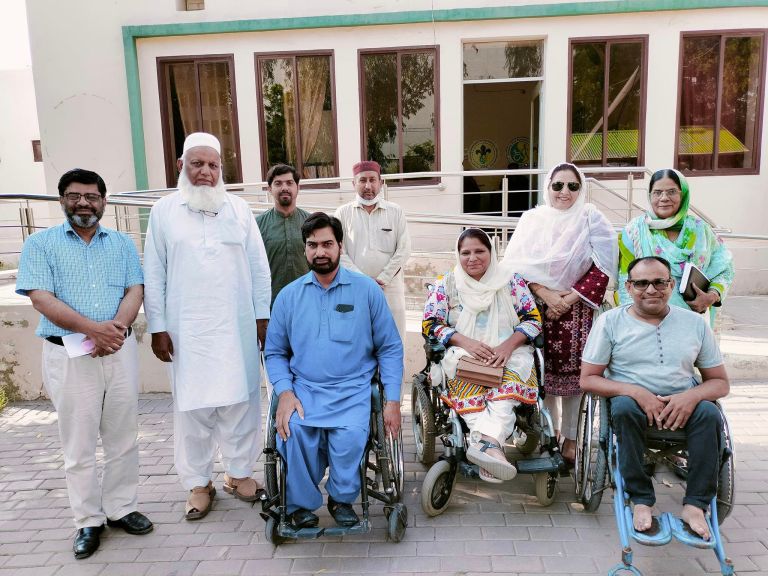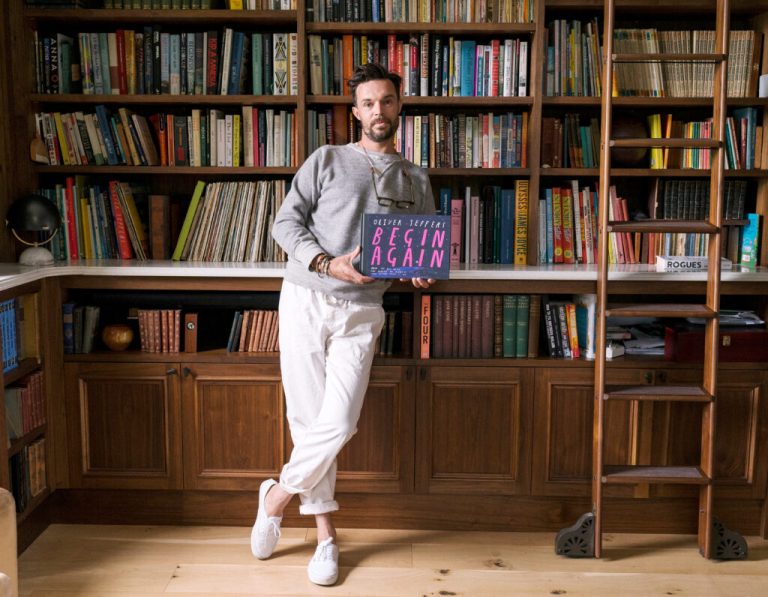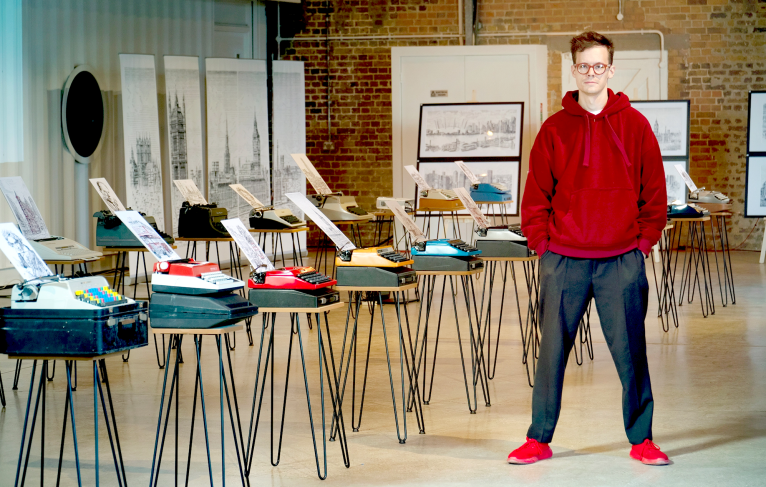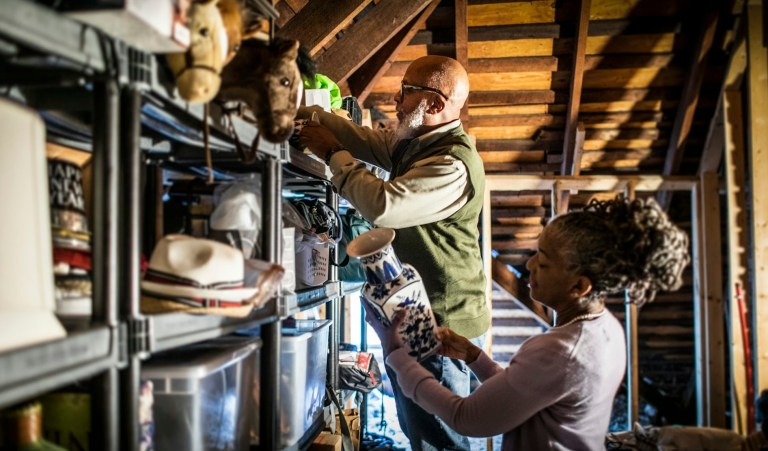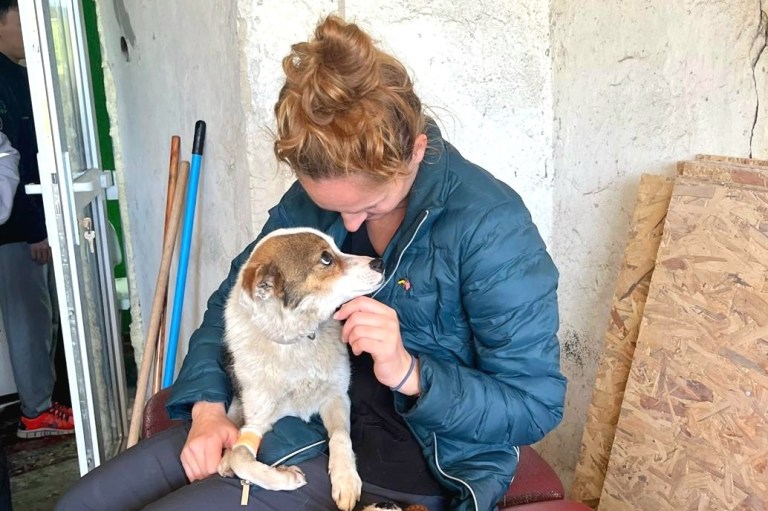If there’s one thing Austin Kleon loves, it’s a list. “I always make the joke that it was good enough for Moses, so it’s good enough for me,” he told Nice News. For the Texas-based artist, the beauty of lists is that they allow for big jumps between ideas — perfect for a brain that loves to free associate — and they “bring order to chaotic things.”
He makes use of them in the free Substack newsletter he publishes every Friday, “10 things worth sharing this week.” And it’s also through lists that he dispenses his advice on unlocking creativity: Nearly all of his books use the structure, from his 2013 bestseller Steal Like an Artist to the one he’s working on now, Don’t Call It Art, set to hit shelves next summer.

The well-being benefits of engaging in creative pursuits are widely reported, but there are often obstacles that hinder us from getting started. Kleon’s suggestions are helpful at pushing through those blocks, whether you’re a professional or an amateur — a word the 41-year-old thinks deserves a rebrand.
“Amateur is a word that’s kind of a pejorative, but the original meaning of the word ‘amateur’ is ‘lover of,’” he explained. “So being an amateur at something just means that you’re more interested in doing it for the love of the thing rather than the making money of the thing.”
The last point is key, he says, because we live in a culture that’s become obsessed with monetizing every hobby. That results in the belief that if we aren’t doing something that can somehow be turned into a side hustle, or we aren’t supremely talented at a particular activity, there’s no point in doing it. And in the end, many people wind up with no hobbies at all.

“A hero of mine, Lynda Barry, the cartoonist, says, ‘No one would ever say you shouldn’t play basketball just because you will never play in the NBA,’” Kleon shared. “You know, people play golf even though they’re never going to be PGA champs. They play golf for whatever reason they play golf. It’s really the same with creative work.”
I spoke with Kleon about ways to unlock creative freedom and start making art purely because it’s fun to do — read on for some of his tips and check out his 2019 book, Keep Going: 10 Ways to Stay Creative in Good Times and Bad, for more.
Build a Bliss Station
Kleon subscribes to the idea that there are three things every artist needs to create: time, space, and materials. The materials are up to you, but to carve out time and space, he recommends building a bliss station, a concept inspired by the mythologist Joseph Campbell — whose core philosophy was the now popular aphorism “follow your bliss.”
Contrary to what the name may imply, a bliss station doesn’t have to be a “where.” It can be a “when.” The only thing it truly needs is “some kind of temporal or spatial boundary that keeps the world at bay,” per Kleon. So, your creative zone could be an entire room dedicated to making art, or it could be the kitchen table at 5 a.m. when the rest of the family is still sleeping, the father of two explained.
“A bliss station can be portable. You can create a bliss station wherever you are,” he noted, adding: “If you put your phone in airplane mode and you set a timer for 20 minutes, and you have some earplugs and a sketchbook, that can be a bliss station.”
Show Up
“It’s funny. I consider myself a deeply lazy person,” Kleon answered with a laugh when asked how he manages to be so prolific. “And that’s where the discipline comes in.”
He said that many people are intimidated by that word — discipline — but the way he defines it is simple, and comes courtesy of guitarist Robert Fripp: making a commitment in time. “Just showing up over and over again is kind of my way that I get over everything, over my laziness, over my apathy, over my despair at what might be going on in the wider world,” Kleon shared.
RELATED: On the Hunt for a Hobby? Here Are 31 Activities to Try
And showing up means just that. You just need to be there.
“If I had to boil down my message for everyone, it’s just to find a time and a place every day and go there and see what happens,” he emphasized. “If you could take 15 minutes every day and spend it doing something that you really wanted to spend time on, I think the compound interest of that over time is just amazing.”
Go Through the Motions
If you’re in the bliss station, waiting to “see what happens,” and nothing does — try starting with the muscle instead of the mind. That is, just start doing whatever it is you’re supposed to be doing, without thinking about it. The term “going through the motions,” Kleon stressed, is another one that gets an unfair rap.
“People say, ‘Oh, he’s just going through the motions.’ But for me, just going through the motions is actually a way that I enter into the work,” he said. “I just pick up a pen and literally doodle, or if I write the date at the top of the page in my diary, there’s something about actually using my hand to make marks on a page that tells my brain, ‘Hey, it is time to get going here. It is time to get to work.’”
He continued: “I think that one of the things that people really misunderstand about creative work is they think that you have to have an idea before you start working, whether you’re playing a guitar or drawing on a piece of paper or kneading clay or something. But I’ve actually found that it’s in the work, and the manipulation of your materials, and simply going through the motions, that’s when the ideas happen.”
Productive Procrastination
Ah, procrastination — it’s the bane of so many our existences. But according to Kleon, it doesn’t have to be. In fact, procrastinating can be a positive, if you do it the right way.
“I think the easiest way to kind of get doing what you want to be doing is to just trick yourself into not thinking you’re doing it,” Kleon explained. “I love to procrastinate, but the way I procrastinate is that I procrastinate on something I should be doing with something else I should probably be doing that just seems more fun.”
@austinkleon Saturday morning collage #showyourwork #tapeandmagazines
♬ original sound – Austin Kleon
He calls it “productive procrastination,” and recommends having a few projects going at once to put it into practice. In the process of working on one creative activity, he explained, inspiration for the one you’re putting off might arise organically.
“Reading is one of the ways I procrastinate from writing. The funny thing about reading is that you almost always come up with an idea for writing when you’re reading,” he said.
Make Gifts
Aside from being a meaningful way to connect with someone, making gifts offers a way out of the belief that we need to be pros to create — and a way into doing things for the sheer joy of it.
“I counsel people if they’re really bummed out with their work to think about making gifts for other people,” Kleon explained, adding that it’s a way of circumventing our conditioning. “You really have to kind of trick yourself into this stuff, because we’re just so wired now to, you know, just be this endless kind of robotic productivity machine.”
He added that when his son was little, the two of them shared a special tradition. “I would make a drawing for my son, and he would make a drawing for me, and we’d have a little drawing exchange. And it felt like some of the most pure, artistic moments that we had together, that we were making something just so it existed for the other person.”
When you buy books through our links, Nice News may earn a commission, which helps keep our content free.

